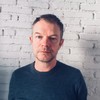Photo: Everynight Images / Alamy Stock Photo
Once again, Britain has been shown up as a country full of caners. In news that will surprise no one who's been within spitting distance of a nightclub toilet in the past couple of years, record numbers of British people are taking Class A drugs, according to new Home Office figures.Data for 2018-19 shows that 3.7 percent of people in England and Wales –1.25 million people – said they had taken a Class A drug in the last year. This is the highest ratio in the use of Class A drugs, which have the highest penalties for possession and dealing, since the government started collecting drug use data in 1996.This rise follows an upturn in general drug use in Britain since falling to a low between 2009 and 2013, a drop that prompted then-Prime Minister David Cameron to declare that Britain's drug problem was solved. Launching the new figures, the government admitted it was concerned "about the upward trend in more recent years – particularly Class A use".Powder cocaine use, fuelled by record purity and availability, continues to rise, with almost a million people (976,000) in 2018/19 admitting they had taken the drug in the last year, compared to 613,000 in 2012/13. More than a third of those who said they had taken cocaine in the last year were aged 16 to 24.People are also taking drugs more often. The data shows a jump in the proportion of people who said they had taken drugs in the last month, most notably among young people using cocaine and cannabis. An estimated 724,000 people aged 16 to 24 said they had taken a drug in the previous month – just over 11 percent.As documented by VICE last week, ketamine has maintained its popularity among young people after a steep rise two years ago.Although ecstasy use has dipped, magic mushrooms experienced a resurgence in use among 16 to 24-year-olds, with last year showing the highest proportion of users (1.6 percent) for 12 years.Perhaps encouraged by the rapid legalisation of the drug across north America, the number of people using cannabis is on the up after a steep fall since the turn of the century. Last year, rates of use among young people (17.3 percent) returned to levels they were a decade ago.Those aged between 20 to 24 were the most prevalent drug users last year, although the age range showing the biggest rise is 25 to 29.However, the biggest predictor of drug use is how often people go to pubs, bars and clubs. Use of Class A drugs in the last year was 11 times higher among those who had visited a nightclub at least four times in the past month (24.5 percent) than those who had not visited a nightclub (2.3 percent).Interestingly, despite the demise of so many of the UK's nightclubs, the last two years have seen a jump in the proportion of regular club-goers taking drugs. Clubbers admitting they had taken a Class A drug in the last year climbed from 9.1 percent in 2016/17 to 15 percent in 2018/19.Likely reflecting the growing prevalence of drugs being traded via mobile phone messaging apps and on social media, the Home Office figures showed drugs are easier to buy than they were two years ago, especially if you are young. More than half (54 percent) of 16 to 19-year-olds said they could easily buy drugs within 24 hours, compared to just over a third (38 percent) of people aged 25 or over. Across all ages the proportion of people saying they could get drugs within 24 hours rose from 14 percent in 2016/17 to 18.7 percent this year.A Home Office spokesperson told VICE: "We are committed to reducing the use of drugs and the harms they cause, and the Home Office has commissioned a major independent review to examine these issues."@Narcomania
Advertisement
Advertisement
